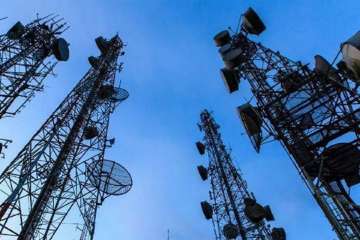What are AGR dues that Vodafone-Idea and Bharti Airtel have been asked to pay?
The Department of Telecommunications (DoT) on Friday ordered Bharti Airtel and Vodafone Idea to clear their adjusted gross revenue (AGR) dues before Saturday midnight

In a decision with monumental implications for India’s telecom industry, the Department of Telecommunications (DoT) on Friday ordered Bharti Airtel and Vodafone Idea to clear their adjusted gross revenue (AGR) dues before Saturday midnight. Reacting to DoT’s directive, Bharti Airtel assured the government in a letter, as reported by Live Mint, that it will deposit Rs 10,000 crore towards clearing its outstanding balance by Feb 14 and the remaining amount has been assured to be paid by March 17.
The Supreme Court had earlier in the day rejected a plea by the telecom companies seeking more time for payment of AGR dues, as it initiated contempt proceedings against the telcos.
What is AGR?
As part of the National Telecom Policy, 1994, licenses were handed out to telecom companies in return for a fixed license fee. In 1999, after concerns were raised by telecom players over the high fee, the government provided them with the option to migrate to a revenue-sharing fee model.
Under the revised government rules, telcos were advised to share a percentage of their annual gross revenue with the government, a sum that would include the annual licence fee (LF) and the spectrum usage charges (SUC).
License agreements between the DoT and telcom companies spelt out gross revenues of the latter, an explainer on the subject carried in the Business Line said last year. So, the AGR was then calculated after allowing for certain deductions in the license agreements.
The license fee and the spectrum usage charges were then set at eight per cent and between three to five per cent of the AGR respectively.
So, what is the dispute all about?
The definition of AGR has however given rise to confusion, with the DoT saying that the sum includes all revenues, from both telecom and non-telecom services.
The telecom operators, on the other hand, want the AGR to just comprise revenue accrued from core services and not on anything else, be it dividend, interest, income or profit from the sale of any investment or fixed assets.
The companies claimed that AGR should comprise just the revenue accrued from core services and not dividend, interest income or profit on sale of any investment or fixed assets.
In 2005, an industry body, Cellular Operators Association of India (COAI) challenged the government’s definition of AGR, with the Telecom Disputes Settlement and Appellate Tribunal (TDSAT) ruling in favour of the telcos in an order passed in 2015.
In another twist to the case, the Supreme Court in Oct 2019 upheld DoT’s definition of AGR. The DoT is reportedly seeking a combined sum of Rs 92,641 crore from the telecom companies, which includes an interest levy of Rs 41,650 crore, a penalty of Rs 10,923 crore and interest on the penalty sum of Rs 16,878 crore, as per a report last year in The Indian Express.
How does the AGR dispute affect the consumer?
There are two reasons why an Indian taxpayer must care about the whole dispute. From the point of view of an investor in telecom companies, the government order is a big blow, as telcos may be compelled to report one-off losses. Financial instability could affect the overall worth of the companies, with telcos also having warned of existential crisis if the dues are not waived off.
For mobile phone users, paying of AGR dues from purses of telcos could lead to them looking to make up their losses by increasing call and data tariffs.
What could further affect the mobile users directly, wiping off of one or two telcos from the market may create a situation of monopoly in the market.
(The headline of the article was modified after publishing)